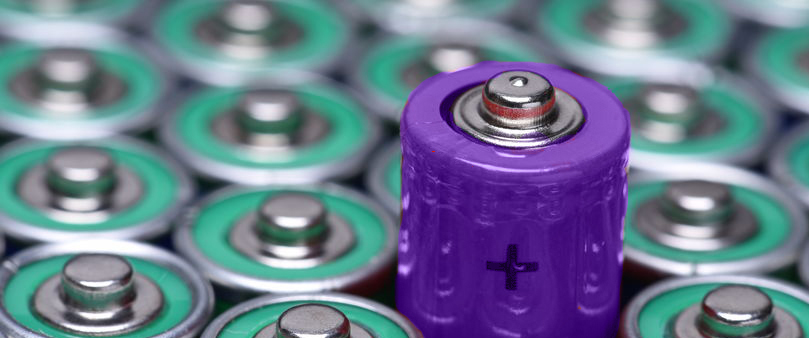
The creation of the glass battery
The man who invented the battery which powered the technological revolution is trying to do it again – at the age of 96. John Goodenough pioneered the lithium ion battery used in computers and mobile phones. Now he’s attempting to make something even better: a glass battery which he hopes would be safer, more efficient, and easier to manufacture.
Lithium ion batteries have a number of advantages over other types of battery, like lead acid and nickel metal hydride. They can pack a lot more energy into the same weight, hold their charge better and can be charged and discharged hundreds of times. But they do have some disadvantages – most notably, the risk of explosions and fires. These are caused by dendrites, little strands of lithium that form inside the battery and can cause a short circuit, meaning your phone might short out… or worse.
Goodenough, who began developing the lithium ion battery when he was 57, has received nine US and international honours, including the Enrico Fermi Award in 2009, which honours scientists of international stature for their lifetime achievements in the development and use of energy. He is an emeritus professor at the Cockrell School of Engineering at the University of Texas at Austin, where he and senior research fellow Maria Helena Braga have been leading a team of researchers trying to develop the new battery.
Lithium ion batteries use a liquid electrolyte to move lithium ions between the anode and the cathode. The glass battery would replace this liquid with a solid electrolyte made of glass. This, the researchers believe, would make it possible for the battery to store more energy per volume than a lithium ion battery (around three times as much); last longer – in experiments so far, the cells have demonstrated more than 1,200 cycles; charge in minutes; and operate in temperatures as low as -20°C, as the glass electrolyte would still be conductive at these temperatures. Until now, inventors have not been able to create a solid-electrolyte battery that can work at less than 60°C. Best of all, the battery shouldn’t form dendrites.
If the batteries become a reality, Goodenough believes they could be particularly useful in electric cars. “Cost, safety, energy density, rates of charge and discharge and cycle life are critical for battery-driven cars to be more widely adopted. We believe our discovery solves many of the problems inherent in today’s batteries,” he said. Higher energy density means a car can drive more miles between charges, and if the batteries can work at low temperatures, there should be no issues with starting a car in the cold.
There could also be environmental advantages, as the batteries could use sodium, which can be easily obtained from sea water, instead of lithium, the mining and disposal of which cause serious environmental destruction.
However, the work has attracted scepticism since the first paper was published in 2016, with some physicists stating that it violated the first law of thermodynamics. As Fortune magazine put it: “Most ‘revolutionary’ new battery ideas in recent years have turned out to be unfit for the real world.” Nonetheless, Goodenough’s reputation alone demands that anything he says be taken seriously – and the researchers have patented their invention, so they must think they’re onto something.
You don’t have to be 96 and still patenting world-changing inventions to be eligible for government funding through the research and development tax credit scheme. Companies whose work involves scientific or technological research can apply to the scheme, which gives you some of your tax back to help you cover your costs. At R&D Tax Solutions, we specialise in helping companies make successful claims. Have a look at our research and development tax relief examples and R&D tax credits calculator to see how much you could be eligible for – and call us on 0161 298 1010 to see how we can help. We also specialise in helping theatres and production companies claim theatre tax relief.





